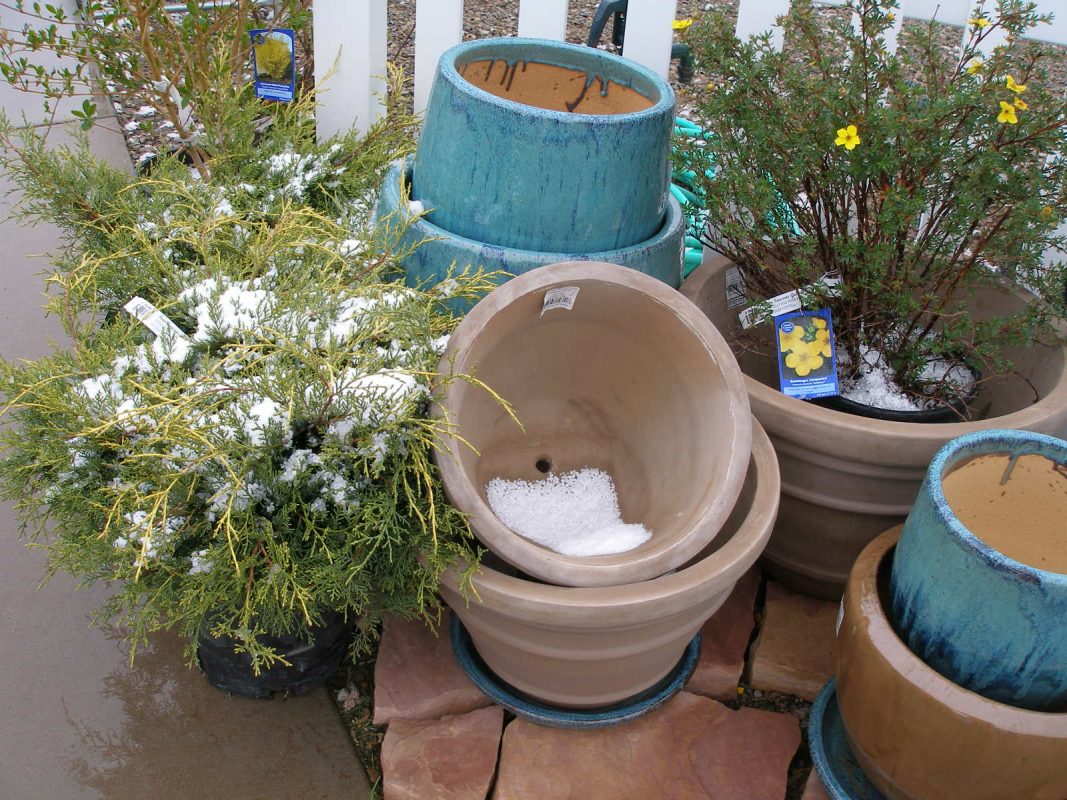Mother Nature is a changeable lady in Southwestern Colorado and many times we will get hit with a hard freeze long after the weather has begun to warm up. There have been too many springs when we’ve all lost fruit crops, early vegetables that we’ve planted, and flowers that we thought were safe to plant. As a matter of fact, cold nights or unexpected cold snaps happen in just about any month of the year here so in this column, I want to give you some tips on how to protect plant material if we happen to experience a late freeze.
My first tip is to watch the weather carefully. Although the National Weather Service often issues frost and freeze warnings, sometimes they don’t, so you’ll need to be aware of nighttime temperatures throughout the growing season. We watch the weather several times a day and send out notices via email whenever the NWS issues a frost or freeze warning but sometimes inversions or the unexpected happens.
It’s important to know your yard and how it reflects what the NWS says. For instance, if yours generally runs colder than what they usually predict, then you’ll need to be aware of that. If it’s warmer, or your plants are up against a south facing stucco wall, for instance, that will hold some heat to offer some protection, then knowing that can be helpful too because it will determine what you’ll need to do in the way of covering plants on cold nights.
Many people make the mistake of thinking that if they cover their crops, that will protect them from any damage and that is partially true. The key determining factor here is what you’re using to cover them with. Unfortunately, the first thing that many people reach for is plastic because it’s easily available but you should avoid using any kind of plastic as a covering. This is important! Plastic conducts the cold and may end up doing more harm than good.
Instead, think about what you would use for yourself if you were trying to keep warm. Use a sheet, blanket, newspaper, towel, or bucket. Make a tent using poles or use some other kind of support and drape one of these over it to keep frost off of tender plants. Wall O’ Waters, Season Extenders, and hot kaps are not only for tomatoes and you can also use these to cover any plants you’d like to protect.
If you have access to a water source, you can try that too. Set it to come on between 3 am – 4 am and let it run until the sun is up. This is the coldest time of the night. If plants do show some signs of frost damage, wait a few days in order to give them time to recover before pulling them up.
Don’t forget to drain your hoses, birdbaths, and other water holding items to prevent them from freezing or cracking as well.
The fact that late freezes often happen in our part of the world is a lesson we learned early on. During our first spring in this area, on June 5th, 1999, we had a hard freeze overnight and it was 29 degrees the next morning. Thankfully we had moved all of the tender plant material at the garden center inside the night before. Although you may not have that option, try some of these things to protect your plants if you find that the more wintery side of Mother Nature isn’t quite done with us yet.

